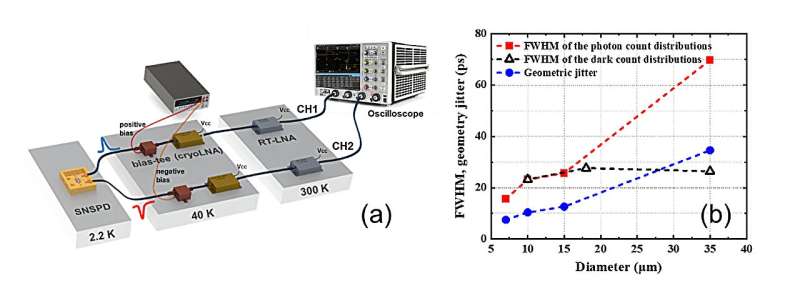This article has been reviewed according to Science X's editorial process and policies. Editors have highlighted the following attributes while ensuring the content's credibility:
fact-checked
proofread
Geometric origin of intrinsic dark counts in superconducting nanowire single-photon detectors

In a recent leap forward for quantum computing and optical technologies, researchers have uncovered an important aspect of photon detection. Superconducting nanowire single-photon detectors (SNSPDs), pivotal in quantum communication and advanced optical systems, have long been hindered by a phenomenon known as intrinsic dark counts (iDCs). These spurious signals, occurring without any real photon trigger, significantly impact the accuracy and reliability of these detectors.
Understanding and mitigating iDCs are crucial for enhancing the performance of SNSPDs, which are integral to a wide range of applications, from secure communication to sensitive astronomical observations.
A team headed by Prof. Lixing You and Prof. Hao Li from Shanghai Institute of Microsystem and Information Technology (SIMIT), Chinese Academy of Sciences (CAS) employed a novel differential readout method to investigate the spatial distribution of iDCs in SNSPDs with and without artificial geometric constrictions. This approach allowed for a precise characterization of the spatial origins of iDCs, revealing the significant influence of minute geometric constrictions within the detectors.
The study revealed that the iDCs in SNSPDs are predominantly caused by a few specific geometric constrictions, regardless of the overall device size. The findings suggest that by targeting and modifying these constrictions, it might be possible to substantially reduce the occurrence of iDCs. The study is published in the journal Superconductivity.
This breakthrough has profound implications for the future of quantum technology and optical systems. By mitigating the issue of dark counts, the accuracy and reliability of photon detection can be significantly improved, paving the way for advancements in secure quantum communication and enhanced sensitivity in astronomical observations.
More information: Xingyu Zhang et al, Geometric origin of intrinsic dark counts in superconducting nanowire single-photon detectors, Superconductivity (2022). DOI: 10.1016/j.supcon.2022.100006
Provided by Shanghai Jiao Tong University Journal Center




















